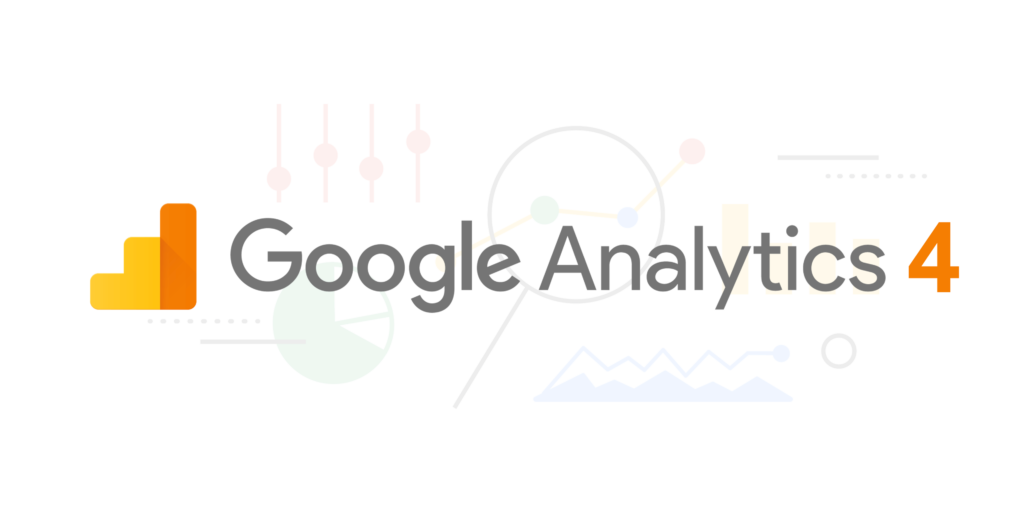What Marketers Need to Know and Do
4min. Read
You’re searching for something. Maybe it’s an existential question of truth, love or the meaning of life. Or then there’s the universal query of, “How do I maximize customer success on my website?” (Socrates was getting to this, but then there was the cup with the hemlock and…)
Chances are you’ve found answers in the form of their Universal Analytics (UA). Now it’s time to better your odds with a switch to Google Analytics 4 (GA4) — the next iteration of the Google Analytics platform and what will become a core tool for building your marketing strategy and guiding your marketing activities/tactics.
On July 1, 2023 this becomes the default for digital (marketing) analytics measurement. This new, and arguably, powerful approach to analytics helps you better understand your customers through a combination of holistic user data across the lifetime of a customer; the ways in which they behave and interact with your properties; and predictive AI (artificial intelligence) for what those customers are likely to do next. All of this helps you to wisely place your marketing dollars, drive the most sales and improve ROI.
“As you get fresh insights from your data, it opens your mind to new questions. As you have new questions, you need to update your tools and your analysis. Saying the process is “done” is like saying you understand everything there is to know about your customers, product, channels and the world.”
Ignore the Future at Your Peril
July 2023? “That’s a ways off! I’ll just wait!” Or maybe you’re thinking, “I’m pretty happy with Universal Analytics, I’ll stick with what marketing data I and my team know.”
Yeah, not so much. While it’s true the official transition is just under a year away, it’s good business to think — and ACT — on GA4 now. Why’s that?
Simply put, the digital marketing space lives on change. Indeed, it thrives on it — and you have to keep up in order to stay ahead. There’s no true downside to becoming familiar with this new standard now. In fact, there are significant potential benefits in outpacing your competitors for when the clock officially strikes “GA4”.
As a business owner and marketer of that business, you should be very — VERY — interested in GA4. Here’s what you risk and can gain by acting on GA4 as soon as possible:
- Google will sunset Universal Analytics on that July 1, 2023 date. That means all standard UA properties stop processing new hits. Done. Finito. The past will be the past — and you will want to be focused on your future with GA4.
- GA4 does not support retroactive data, so sticking with UA means you risk losing out on learnings from this next year; you will lose the linchpin in your marketing analytics. Start using GA4 now and you will have what you need to compare year-over-year data.
- With over 2 years of current operation, GA4 is (or will soon be) the standard for data analytics. It’s likely new features will skip UA and only be added to GA4 — new features you can be accessing, learning from, and applying to your marketing efforts now.
Appreciate the GA4 Difference
Universal Analytics has been Google’s go-to for collecting and organizing user data on the internet since 2012. Its tracking codes for websites collect customer insights, with UA representing the peak of page-loading measurement, including cross-platform tracking and flexible code options for custom dimensions and metrics. Transmitting that data in UA relies on cookies, the ubiquitous text files in our browsers we are often agreeing to accept in order to click ahead.
A website with UA sets a cookie into the user’s browser, which allows the platform to monitor web activity during that user’s session on the site. This kind of measurement is a “session-based data model.” UA was built for a time when online measurement was anchored in the desktop-based web, independent sessions and more easily observable data from those cookies. Good for the time — but now on the verge of obsolete.
Google Analytics 4 has been built with the mobile world in mind, for App+Web. This modernization goes beyond cookies, operates across platforms, and uses event-based data to deliver user-centric measurement that you can turn into better marketing strategies and, ultimately, better experiences for your customers.
While it still examines page loading, its infrastructure manages page events and triggers data more directly. This makes for metrics that go beyond a strict browser-page framework to incorporate the apps and software applications that are integrated into the lives and actions of today’s (your) customers.
Designed with privacy at its core, GA4 goes well beyond UA’s current capabilities and helps you meet evolving needs and expectations, with far greater, granular control over data collection and usage for your marketing teams as well as your IT and legal departments.
One standout change here is that GA4 no long stores IP addresses, which could be misused to identify personal information to compromise your consumers’ privacy.
These types of solutions help your business adhere better to international data privacy laws, such as the EU’s General Data Protection Regulation, or GDPR (GA4 features country-level privacy controls). It also helps to address the growing presumption users have for more protection and control when it comes to collecting information and data about them.
At the same time, GA4 delivers the strong, next-level analytics your marketing teams need to understand user segment behaviors and plan your future. Beyond what Universal Analytics could provide, Google Analytics 4 reveals a unified view across your websites and apps: a new, more powerful view of the entire customer experience/journey regardless of where you engage them. This can even extend into tomorrow: leveraging Google’s strengths in machine learning (artificial intelligence) GA4 can also surface and predict new intelligent insights based on consumer behavior and trends. These are the types of future insights that can help craft different marketing strategies that you may not have considered and to significantly improve your marketing performance.
This table helps draw these important distinctions at a glance:

“Time and money are your scarcest resources. You have to allocate them to the areas of highest-impact. Data reveals impacts, and with data, you will bring the power of science to your marketing and business decisions.”
Reinforcing the Importance of a Switch to Google Analytics 4
You’re right to ask the practical question: “WIIFMB?” — “What’s In It for My Business?” And you should be excited by the answers. First, GA4 connects behavioral data to transactional data — for more opportunities to segment customers, and personalize experiences and marketing. Second, it provides simpler ways to connect with Google Search Console, Data Studio and Google Ads — to export, visualize and report your data. Plus…
Consider the detail in these “top 5” benefits…
1) Powerful New User-Centric Metrics
Say goodbye to bounce rates and hello to more useful engagement metrics, with intelligent tracking and predictive analytics. GA4 considers a session as engaged when it lasts for at least 10 seconds, has at least one conversion event, or involves at least 2 page views.
Engagement is now measured in GA4’s enhanced events for a well-rounded view of your customers’ behaviors and actions. These include scroll data, file downloads, site search and video engagement: all easy to implement with no custom code, and all easy to understand how users interact, which content compels them to take action, and what content needs more optimization.
2) Integration with BigQuery
The BigQuery data warehouse includes built-in features like machine learning, geospatial analysis, and business intelligence to help you manage and analyze massive datasets in just seconds. Use SQL to quickly answer complex questions without infrastructure management. Plus combine this data with that from your other CRM tools for a treasure house containing your total customer journey.
3) Enhanced Customer Experience/Journey Tracking
By focusing on user interactions — captured as events across App+Web — GA4 generates Lifecycle reports that align with the critical stages of your customer journey: acquisition, engagement, monetization, and retention. Use these to identify gaps and opportunities, and gain insights into where to optimize your marketing strategies.
The potential for efficiency is already being proven. Thanks to Google Analytics 4, one UK-based fitness company reports a 9% reduction in user drop-off; a 5% increase in product clickthroughs; and a 30% savings in time spent on user journey analysis.
4) Targeted Audience Segmentation
With the ability to create segments based on events and time, you can create precise audiences that give you a valuable picture of who you’re engaging and how they interact with your content. This represents a wealth of opportunity for conversions and sales, fueling optimized marketing campaigns that reach precise audiences at the right time.
And via automatic sharing of your audiences with Google Ads, GA4 lets you laser target your paid ad campaigns on-site visitors based on a specific behavior pattern.
5) Advanced Analysis Hub
GA4 unlocks powerful tools previously available only to Google Analytics 360 customers, enabling deeper insights into behaviors. Your marketing can now visualize data to discover data based on heat maps; segment overlap reports (to show the relationship between targeted segments); customizable options to set up specific funnels; and path analysis to identify the most common navigation taken by users across your site.
Conclusion – Investing in the Future of Analytics
There’s a reason that Google Analytics is installed on over half of all the websites on the internet: a terrifically strong free version. That doesn’t change with GA4, as Google’s mission in this respect remains, “(to offer) a free version in order to help businesses of all sizes and stages better analyze and improve their websites and apps.” And they’re doing it with a more human view of engagement; leading-edge predictive analytics; next-level experience/journey tracking; and robust audience segmentation. Once more… for free!
Where you will need to invest is in your people’s time to make the transition: act as soon as possible to make the process of rebuilding your data in GA4 as smooth as possible.
(Where you may want to invest is in a partner like IDLab, not just to help with the transition and setup — but also to align your marketing strategy with the technology.)
Returning once more to those existential questions of truth, love and meaning? The answers may be found in the invaluable asset of your customer data. But only if that data is accurate, reliable and you can properly collect, analyze and leverage it to efficiently run and grow your business.
Now is the time to change your perception of how you view your customer. Switch to Google Analytics 4 and you have the new tool that can make that happen for you — starting today, and charting toward your future.




